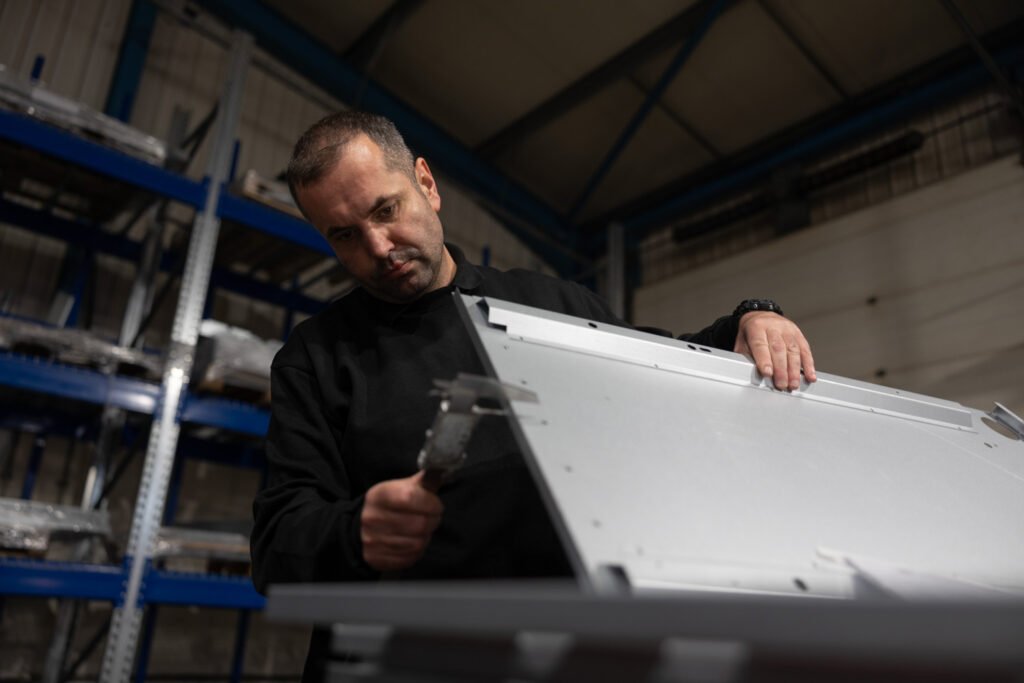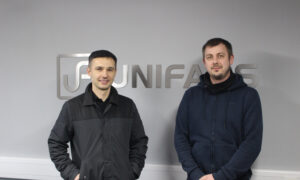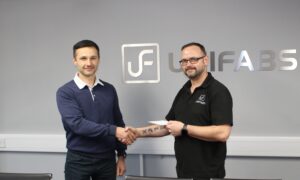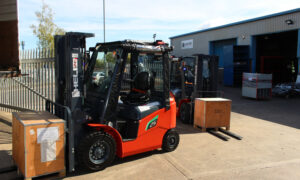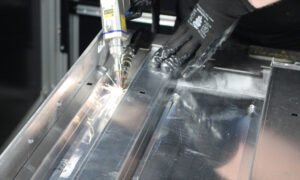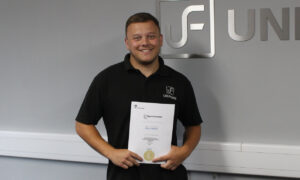Here are some frequently asked questions about laser welding
Have a question of your own?
Please get in touch
+44 (0)2476 393889
sales@unifabs.eu
Laser welding is a high-precision, non-contact welding process that uses a focused laser beam to fuse materials together. The laser delivers a concentrated heat source to a small area, resulting in a narrow, deep weld with minimal distortion or spatter. It’s particularly effective for thin-gauge metals, delicate parts, or applications where visual appearance and consistency are important.
At Unifabs, our laser welding system uses the Max Photonics ZXMA1-65, which includes a wire feed unit for additional flexibility. This allows us to deliver clean, accurate welds on a variety of joint types and material thicknesses.
While MIG and TIG welding remain core parts of our fabrication process, laser welding offers several distinct advantages:
Precision: A smaller heat-affected zone and greater control allow for finer, more detailed welds.
Speed: Faster weld times improve production efficiency.
Minimal distortion: The focused heat input reduces warping, making it ideal for cosmetic parts.
Less finishing: Clean welds often eliminate the need for grinding or reworking.
Repeatability: The process is highly consistent, even across high-volume runs.
This makes laser welding an excellent option for projects where accuracy, finish quality and cycle time are critical.
Yes. The laser welding process is highly repeatable and consistent, making it ideal for large-scale orders. We design and build custom jigs and fixtures in-house to ensure precise alignment and fast turnaround, particularly for repeatable weld seams and production batches.
We can laser weld several ferrous and non-ferrous materials, including:
Aluminium – up to 5.5 mm thick
Stainless Steel – up to 6.5 mm thick
Mild Steel – up to 6.5 mm thick
Laser welding is especially suited to materials that are traditionally considered more challenging to weld, such as aluminium, which has high thermal conductivity and a surface oxide layer. Our system produces strong, consistent welds while preserving the material’s structural and visual integrity.
We do. Aluminium welding is often regarded as more technically demanding due to its material properties, but our handheld laser welding cell gives us the ability to achieve strong, reliable welds with minimal heat distortion or porosity.
Our setup includes an integrated wire feed and enclosed welding bay to ensure safe, clean and consistent results—particularly important for aluminium enclosures, brackets and aesthetic components.
Laser welding is ideal for any application where tight tolerances, visual finish, and part integrity are key. Common use cases include:
Consumer and tech enclosures
Automotive brackets and panels
Lightweight structural components
Decorative or visible weld seams
Precision-formed sheet metal assemblies
If you’re unsure whether laser welding is right for your part, our team can review your design and recommend the most effective approach.
Absolutely. We work closely with customers to identify the best welding method for each application. If you’re exploring laser welding for a specific component or assembly, we’ll assess your drawings and requirements to determine whether it’s the right fit—and we’ll suggest alternative options if not.
Our goal is always the same: to deliver a high-quality, cost-effective welded product that meets your technical, aesthetic and production needs.

We’re proud of every product we make
Stay ahead of the competition, utilise our wide range of services and get your products to market with ease.
